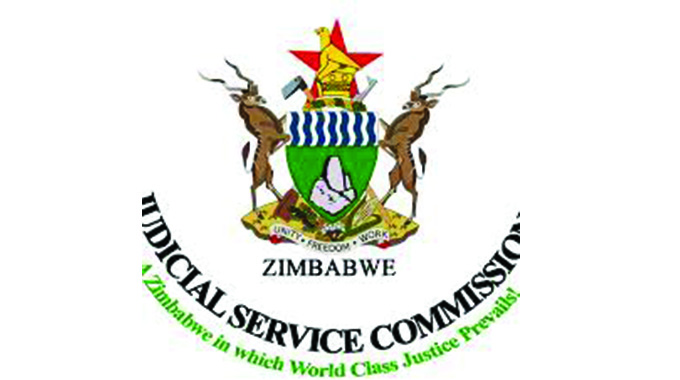JSC goes digital

Chronicle Reporters
THE country’s judiciary is set for digital transformation following the introduction of the integrated electronic case management system (IECMS), a web-based system that automates court processes.
The e-filing system will be rolled out in two phases, starting in January next year. With the new electronic system, all courts across the country will go paperless.
IECMS automates and tracks all aspects of case life cycle, from initial filing through disposition and appeal.
According to the Judicial Service Commission (JSC), IECMS is a centralised data management system that will transform all courts into paperless and full automation.
The JSC, in its 2021-2025 Strategic Plan, adopted a motion to digitalise the country’s justice system through the introduction of IECMS.
Speaking during an open day to mark JSC’s 11th anniversary on Thursday in Victoria Falls and Hwange, JSC deputy secretary Mr Sithembinkosi Msipa said the system will be rolled out first at the Constitutional Court, Supreme Court and Commercial Court in January next year, marking a departure from the manual filing of documents.
JSC has since engaged Synergy International, an American company that has already started work with test runs set to be done between September and December this year.
“We have done a lot of work already and we are almost ready for them (Synergy International) to give us a prototype for the Commercial Court, Constitutional Court and Supreme. We are going to do test runs for the IECMS from September to December this year and come 1 January 2022 at these courts we are not going to be filing manually,” he said.
“Everybody who files at these courts must file through the e-platform. E-justice and automation of justice are very important so we are going to introduce Integrated Electronic Case Management System where we can file documents online, make payments, retrieve judgements, file pleadings, track cases, file divorces, pay fines online.”
Mr Msipa said the implementation of the system is expected to be in two phases and completed within the next five years.
“The system will increase the ranking of Zimbabwe in Doing Business report in the Enforcing Contract Indicator as IECMS will cover all technical items required for the scoring of the indicator, increase judicial accountability, improve access to justice for all as well efficiency and effectiveness of the judiciary,” he said.
The first phase will focus on the Constitutional Court, Supreme Court and Commercial division of the High Court starting in January next year.
Phase two will target the High Court, Labour Court, Administrative Court, Magistrates’ Courts and Sheriff of the High Court.
The system has a calendar feature that enables users to view the scheduled hearings for their cases.
There is also an option where every time a user of the IECMS logs into the system, notifications relating to them can be viewed in the system.
Virtual hearing allows a defendant charged in a police station or prison to have a hearing held over secure video link from the courts.
Addressing stakeholders at Tredgold Building in Bulawayo, Deputy Chief Magistrate Ms Bianca Makwande said the introduction of the system is expected to bring efficiency, reduce backlog and prevent loss and physical damage to documents and case files.
She said in light of Covid-19, the new system will reduce unnecessary visits to the courts by litigants to file papers or retrieve some documents.
“The coronavirus pandemic makes the implementation and delivery of IECMS even more urgent since the Government and the judiciary need to take measures in protecting the health and well-being of its judicial officers, staff and members of the public who use our courts,” said Ms Makwande.
“The IECMS will bring the court to the doorstep of everyone through their computers, laptops, tablets and mobile phones enabling and capacitating litigants and lawyers to electronically file cases, submit all case related information and track cases throughout the entire life-cycle without the need to visit the courts physically.”
Currently all court processes are limited to brick-and-mortar control as all papers and other simple processes depend on litigants and their representatives having to actually visit a court building to file papers during working hours.
The IECMS will integrate systems from all institutions of the justice sector, which include police, Zimbabwe Prisons and Correctional Service (ZPCS), Law Society of Zimbabwe (LSZ), National Prosecuting Authority (NPA), Zimbabwe Anti-Corruption Commission (Zacc), Attorney General’s Office and the Legal Aid Directorate.
People living with disabilities urged JSC to expedite the introduction of an inclusive judiciary system to ensure them easy access to court services.
Most courts in the country are not accessible to people with disabilities and do not have relevant services such as Braille, sign language, hearing aids among others.
Mr Pick Nkomwa from Nkomwa Foundation Trust, a disability organisation based in Gwanda said cases involving people with disabilities were dragging because the courts did not have relevant services.
“When we look at the Gwanda Provincial Magistrates Court we see that the infrastructure has a lot of barriers for people with disabilities which make it difficult for people to access the court rooms and offices. It’s really concerning that a provincial court which handles the entire province does not have ramps,” he said.
Mr Nkomwa said cases of people with hearing impairment are taking long.
“For example, we have a case which keeps being postponed as an interpreter who is conversant in sign language won’t be available. There is also need for court material to be produced in Braille for the visually impaired,” he said.
“We appreciate this programme by the JSC as it will help us to access services. We hope as JSC moves to develop infrastructure it will prioritise putting up ramps as a matter of urgency and improving its system,” he said.
This year’s open day was held under the theme “Court automation and integration- breaking barriers for persons for people with disabilities.”












Comments